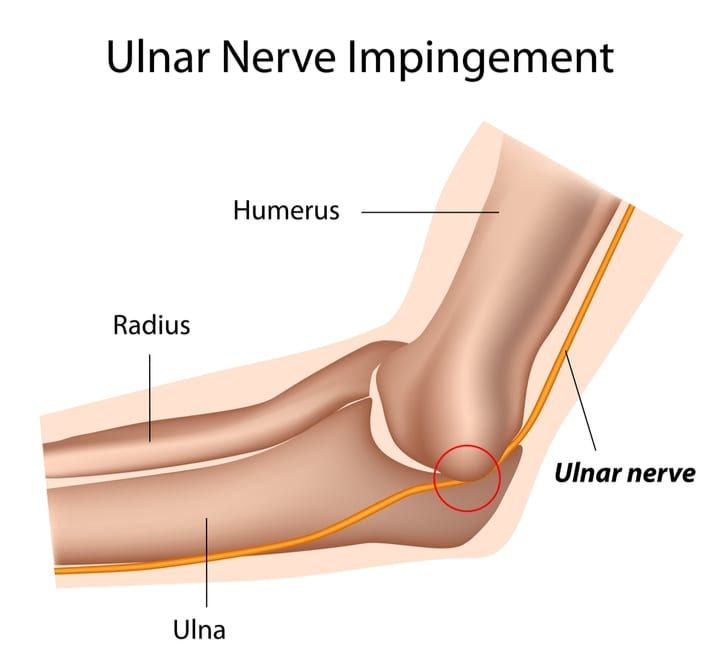Background:
Ulnar neuropathy is a medical condition in which the ulnar nerve is compressed as it travels across the elbow or the wrist. It is considered to be the second most common site of nerve entrapment in the upper extremity, the first being the wrist (carpal tunnel syndrome). There is a higher occurrence in men.
Causes:
Ulnar neuropathy is caused by increased pressure on the ulnar nerve as it travels across the elbow or the wrist less frequently. Compression of a peripheral nerve induces marked changes in the nerve fiber structure causing impairment and damage to the nerve. Ulnar neuropathy can be associated with many medical conditions that cause pressure on the ulnar nerve, such as arthritis, pre-diabetes (impaired glucose tolerance), diabetes, thyroid dysfunction, trauma or excessive use of the arms. Few studies also suggest that ulnar neuropathy is provoked by repetitive flexion of the elbow in industrial occupation causing damage to the ulnar nerve.
Signs and Symptoms:
Numbness and tingling sensations in the fingers in the ulnar nerve distribution are the hallmark neuropathic and compressive symptoms of ulnar nerve entrapment. Most often, the abnormal sensations are diverse and are confined to the fourth and fifth fingers, but should not include the palm of the hand.
The numbness may be more noticeable at night, possibly related to awkward sleep position causing prolonged flexion of the elbow. If left untreated, it may progress to involve the motor fibers leading to difficulty using the fingers and weakness of hand grip as patients report trouble with opening jars, brushing the teeth, turning doorknobs, etc. Occasionally, few patient also complain of elbow pain that may radiate to the shoulder.
Treatment Options:
Patients with signs and symptoms that correlate to ulnar neuropathy must have an electrodiagnostic study (Nerve conduction study and EMG) to confirm the diagnosis by a highly specialized and fellowship-trained neurologist as Dr Yono and Dr Kashouty. Ultrasound is also used to inspect the anatomy of the elbow and the wrist to exclude other causes.
Unless there is an urgent need for surgery, treatments such as splint or reversed elbow pad along with oral medications, are recommended initially to relieve the symptoms of ulnar neuropathy. The benefit of using some oral medication is to lower the local inflammation in the elbow or the wrist around the ulnar nerve and also has powerful local anti-inflammatory agent to reduce the swelling and pain.
If conservative therapy fails to respond and relieve the symptoms, or if symptoms are too severe, the decision to proceed to ulnar release or decompression surgery should be considered. Typically the surgery is indicated for patients with finger weakness on clinical examination, persistent numbness and tingling in the fingers, or severe electrodiagnostic (Nerve conduction study and EMG) abnormalities.
Citation
Guardia III, Charles. “Ulnar Neuropathy Treatment & Management”: Ulnar Neuropathy Treatment & Management: Approach Considerations, Nonsurgical Therapy, Options for Surgical Intervention. Medscape.
URL: emedicine.medscape.com/article/1141515
Updated September 17, 2015. Accessed October 15, 2015.




